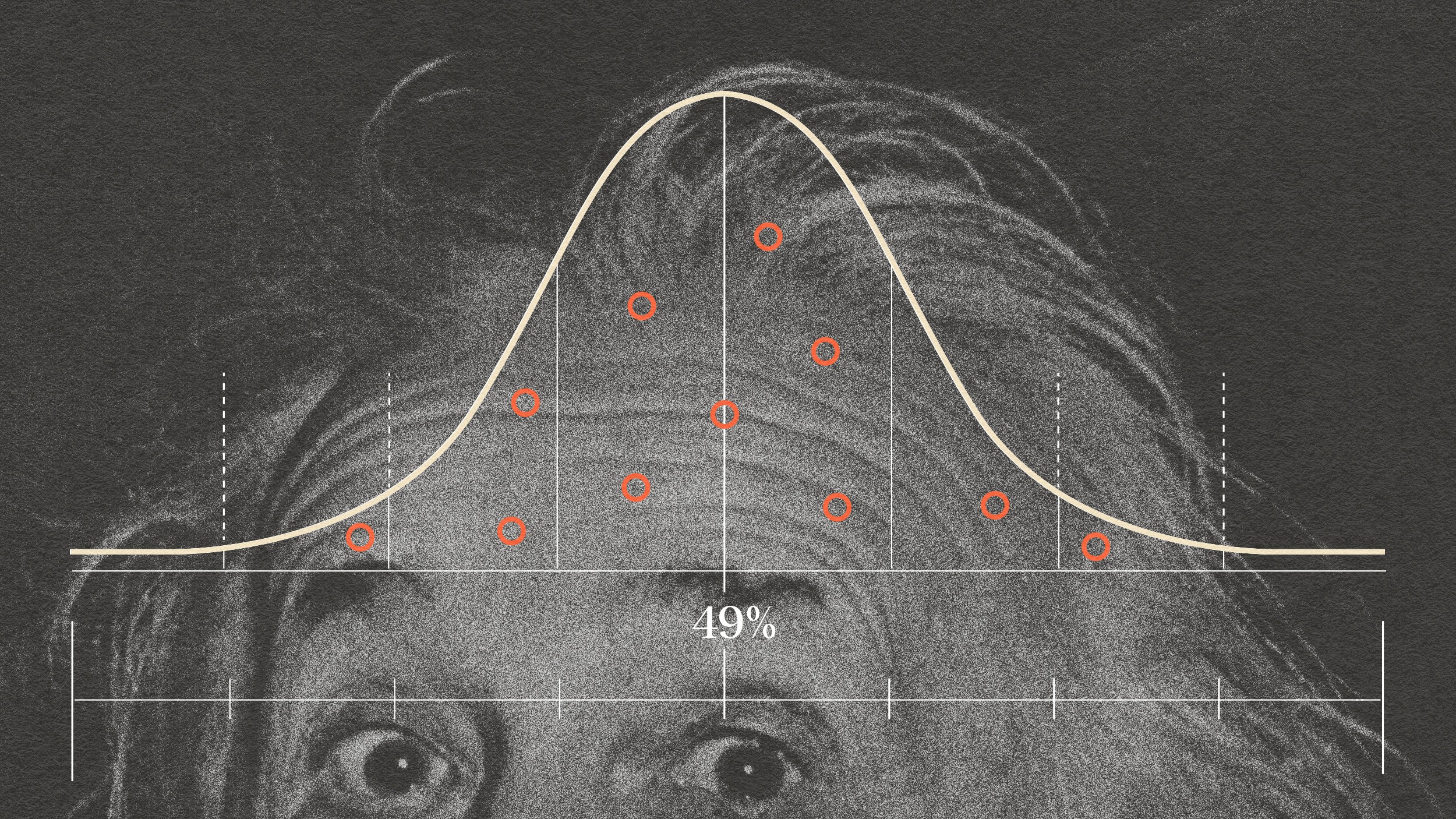Fear has always had a hold on us, but never with such fervor. Welcome to the end of times. We cannot sink lower. ISIS is at our door, our elected leaders are malevolent man-children, amber alerts are lighting up our phones, immigrants are bringing a plague of violence, someone was murdered while playing Pokemon GO, climate change is flooding our homes and starving our crops. How can we go on?
But, breathe deep and let the clouds of panic part; it turns out there’s very little correlation between the above mindset and reality. Terrorism, despite it reported epidemic, is less prevalent in the Western world now than it was in the 1970s and ’80s. Crime is decreasing. Immigrants actually lower crime in gateway cities, and don’t affect crime rates elsewhere. Rates of rape and sexual assault have been declining for decades, and are now a quarter or less of their peaks in the past. Despite Zika and Ebola hype, infectious diseases are down. The list continues and is wonderfully documented at length in Steven Pinker’s book, The Better Angels of Our Nature: Why Violence Has Declined.
However, that’s not what we like to hear, because we don’t feel safe. This good news feels inaccurate. Why? Well, we have the non-stop news cycle to thank for that, and social platforms that turn every smartphone user into an independent correspondent capturing every horror from the grocery aisle to the protest march. We are experiencing an oversaturation of fearful messages.
“What is really fascinating when we look at the brain research around fear is that our brains proxy anything that feels unfamiliar, incoherent or inaccessible as being unsafe,” says Harvard psychologist Susan David, author of Emotional Agility. We like familiarity. We like it so much that hearing that terrorism is likely to strike us personally at any moment is somehow more comforting than the message that it’s not, because the fear is more familiar to us at this stage. We’ve come to trust it. If we hear something often enough, we associate familiarity with truth.
It even works on a personal level, where people are drawn to those who hurt them and belittle them purely because the message is familiar. It feels cozy and you’ve been there before. You know how this works. It’s scarier to try something new.
And of course fear is heavily embedded in politics. We have politicians who are effectively demagogues, who aim to inspire fear and cement our bond to them by hyperbolizing a threat to our mortality. So how can we repel deceptive messaging and see clearly?
Psychologist Daniel Kahneman identified two kinds of thinking: system 1 thinking and system 2 thinking. David explains: “System 1 thinking is the intuitive response, the emotional visceral ‘us’ and ‘them’ that can sometimes arise out of fear. System 2 is the deliberate thoughtful examination of: what is this person saying? Is it in line with how I really want to be? Is it connected with how I really want to raise my children? Is this a world that I want to support?’
David says that if we can step back from our fear and see it for what it is – manipulated panic rather than data – we can protect ourselves from the demagoguery message and re-align with our true values.
It is difficult to do, and the repetition makes it harder to see straight. Here David draws on the 2016 US election as an example. “… We used to hear things that the politicians would say and we would be like, ‘Oh my goodness how can the person possibly say that thing?’ But what happens over time is the more familiar something sounds… even if the story is inaccurate, even if the story doesn’t serve us, the more we are likely to become immured to it and immune to it.” Things that were said in the election six months ago that horrified people are now being met with a light-hearted ‘Oh, there we go again’.
David questions the media ethics in pushing out stories that overexpose inaccurate messages of fear that could incite violence and hatred. It familiarizes us to an incorrect message, leaving our values open to corruption.
Susan David’s most recent book is Emotional Agility: Get Unstuck, Embrace Change, and Thrive in Work and Life. Bonus pack is available here.
Susan David: How do we thrive in a world where every which way we turn our fear is being activated by politicians, by the media and by the desperate events that are happening around us? What is really fascinating when we look at the brain research around fear is that our brains proxy anything that feels unfamiliar, incoherent or inaccessible as being unsafe. There is fascinating research that shows that when people have lower levels of self-esteem and they are in a job in which they are recognized and promoted, that promotion can feel incoherent to the person with low self-esteem. They have low self-esteem and they might be used to and expecting to be treated badly. So what is fascinating is the results showing that when people are promoted when they have a lower levels of self-esteem they are more likely to leave their jobs. Fear is an incredibly, incredibly powerful force in our lives and our brains are fairly immature in assessing anything that feels slightly incoherent for unfamiliar as unsafe.
What this might mean is that if you are used to hearing a story time and time again from a parent or from a partner about how you are not good enough, you are more likely to be drawn to that relationship because it feels familiar. The messaging that you are getting time and time again is connected with what you expect to get.
When we have politicians who are effectively demagogues who are inspiring fear in us, that fear leads to very particular and relatively predictable responses. When we are fearful there is this idea in psychological research of mortality say yes that when our mortality is threatened, when someone says oh this group of people is out to get you and we feel that we are actively being threatened we are more likely to stereotype, we are more likely as individuals to become bigoted, we are more likely to respond to messages that we hear time and time again even if they are against our values as somehow making sense to us.
How do we protect ourselves against this? Daniel Kahneman describes system 1 thinking and system 2 thinking. System 1 thinking is the intuitive response, the emotional visceral us and them that can sometimes arise out of fear. System 2 is the deliberate thoughtful examination of what is this person saying? Is it inline with how I really want to be? Is it connected with how I really want to raise my children? Is this a world that I want to support? When we are able to step back from our fear, not to pretend that it doesn't exist but to see our fear for what it is, fear, not a direction but data and an emotion. When we are able to step back from the fear and able to assess the fear and assess the messaging from the place of our values in a more deliberate thoughtful way, we are able to come to a place where we are ultimately protected from the demagoguery message, from the message of the fear and are able to move us ourselves forward in a way that is aliened with how we truly want to be and with a world that we truly want to live in.
When Donald Trump first started with all of his messaging we used to hear things that the politicians would say and we would be like oh my goodness how can the person possibly say that thing? But what happens over time is the more familiar something sounds, so the more we've heard it time and time again, even if the story is inaccurate, even if the story doesn't serve us the more we are likely to become immured to it and immune to it. So what I actually think from a media perspective is when I speak to people in the media about this they will often say well we simply go where the story takes us so we'll give as much coverage to wherever the story is at even if the story is one that insights hatred or violence. But I actually think that there is a very, very powerful ethical choice that the media makes in that.
Because when they expose and expose and expose and expose a story that is about hatred and a story that is about violence, as human beings the more familiar we become with that story the more immured we become to it. And I think we can see exactly this in the current elections that things that were said six months ago where everyone was horrified that a politician could possibly even prevail on people to listen to what was being said are now being met with oh there we go again. We somehow have become immured to the messaging because of the familiarity with which we are hearing it. And I think it's really important for us as a society and for us as voters to recognize that a familiar story it's not necessarily a truthful story. A familiar story might sound comfortable and our brains might proxy that story for meaning safe and therefore right and therefore comfortable, but that story doesn't necessarily reflect us or what we value. And it's really important to be able to step out from the safety of what might at this point feel familiar and really recognize the words for what they are. They are words that are inciting hatred and division and stereotyping in us as a society. And for many of us that's not the society in which we want to live. And I think there is a moral impetus on us to be able to step back from the story and step forward with our values.





